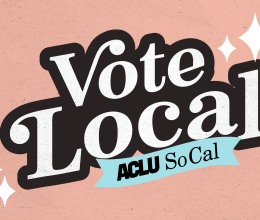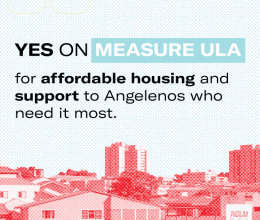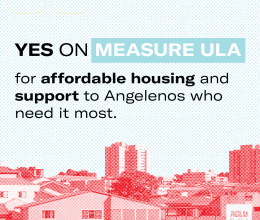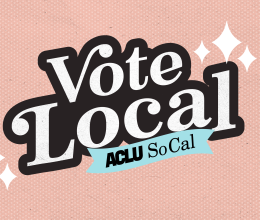
The following post first appeared in The Voice of OC.
It would be too charitable to say that homeless people encamped along the Santa Ana Riverbed live there.
At best it is a very tenuous existence.
For at least 14 people in the last few years, it has been a place to go to die.
Authorities have been known to release water into the riverbed that crests as high as four feet, sweeping away belongings and sometimes people. Over the summer, Carol, who camps along the riverbed with her husband, was swept downstream by a wall of water that was released without notice.
Since she doesn’t know how to swim, she feels lucky that she was able to cling to an air mattress for safety. The flooding danger will only get worse this winter with the forecast of a record El Niño.
The homeless encampments dotting the riverbed are creating a headache for public officials, who are worried about how to get people to move out before El Niño storms and flooding move in.
Everyone camping along the riverbed faces a very real threat of drowning if they do not leave before the storms come.
Still, those encampments have some advantages over other public spaces. Police officers and the sheriff’s department come around less frequently than they do in Orange County cities. Carol and her husband describe the riverbed as the one place they can mostly avoid police harassment and expensive tickets for being homeless.
But life there is hazardous and challenging nonetheless. Carol uses a cane, and finds it difficult to scale the embankment. She says outreach workers rarely visit, and social and medical services are hard to come by. Basic necessities like fresh food and water are far away.
And what pushes people into the riverbed in the first place? The homeless policies of local governments. Thirty-three of the county’s 34 cities ban camping, resting, or otherwise being in particular public places, such as parks and sidewalks. Over half have city-wide bans on these activities.
This is in contrast to the City of Los Angeles, which, as part of a settlement agreement in Jones v. City of Los Angeles, does not enforce its law prohibiting sleeping on the streets between the hours of 9 p.m. and 6 a.m.
Orange County provides only enough emergency and transitional shelter beds to accommodate about half of all people who are homeless on any given night. The rest have no choice but to sleep outdoors—and risk getting a citation. It is no surprise then that some end up in remote areas such as the Santa Ana riverbed.
Carol and her husband are a case in point. After becoming homeless, they set up their tent in Fullerton beside a sound wall next to the 91 Freeway. Often, the California Highway Patrol, Fullerton Police officers, and Caltrans workers dropped by to talk to them in response to complaints about their encampment.
The complaints piled up, and finally California Highway Patrol officers told the couple that they had to leave. As they were trying to figure out where to go next, Fullerton police officers shooed them out of the city, pointing them in the direction of Anaheim. When they crossed the bridge to Anaheim, however, the Anaheim police were there to greet them.
The officers recommended that the couple go to the riverbed near the 5 Freeway. They said there were other people living there. So that’s where they went.
Certainly, county officials are right to take seriously the public safety risks in the riverbed.
But they need to give the people who are living there a meaningful alternative. Instead, the typical strategy of county departments, including the Sheriff’s Department and Orange County Public Works, is to sweep through the riverbed, impound or discard belongings, give people tickets for sleeping, and order them to move along—without giving them any place to go.
Where will they end up?
Back in the surrounding cities most likely, filling the parks and sidewalks. And when the storms pass, they will appear in the riverbed again.
Until the county gets serious about housing people, they will sleep outside because they have nowhere else to go.
Until cities decide to stop criminalizing people for being homeless, they will continue to move from spot to spot because they are told to do so by officers of the law. And sometimes they will risk their safety or even their lives in exchange for a little respite from this endless cycle of harassment.
Eve Garrow is homelessness policy analyst and advocate at the ACLU of Southern California.






